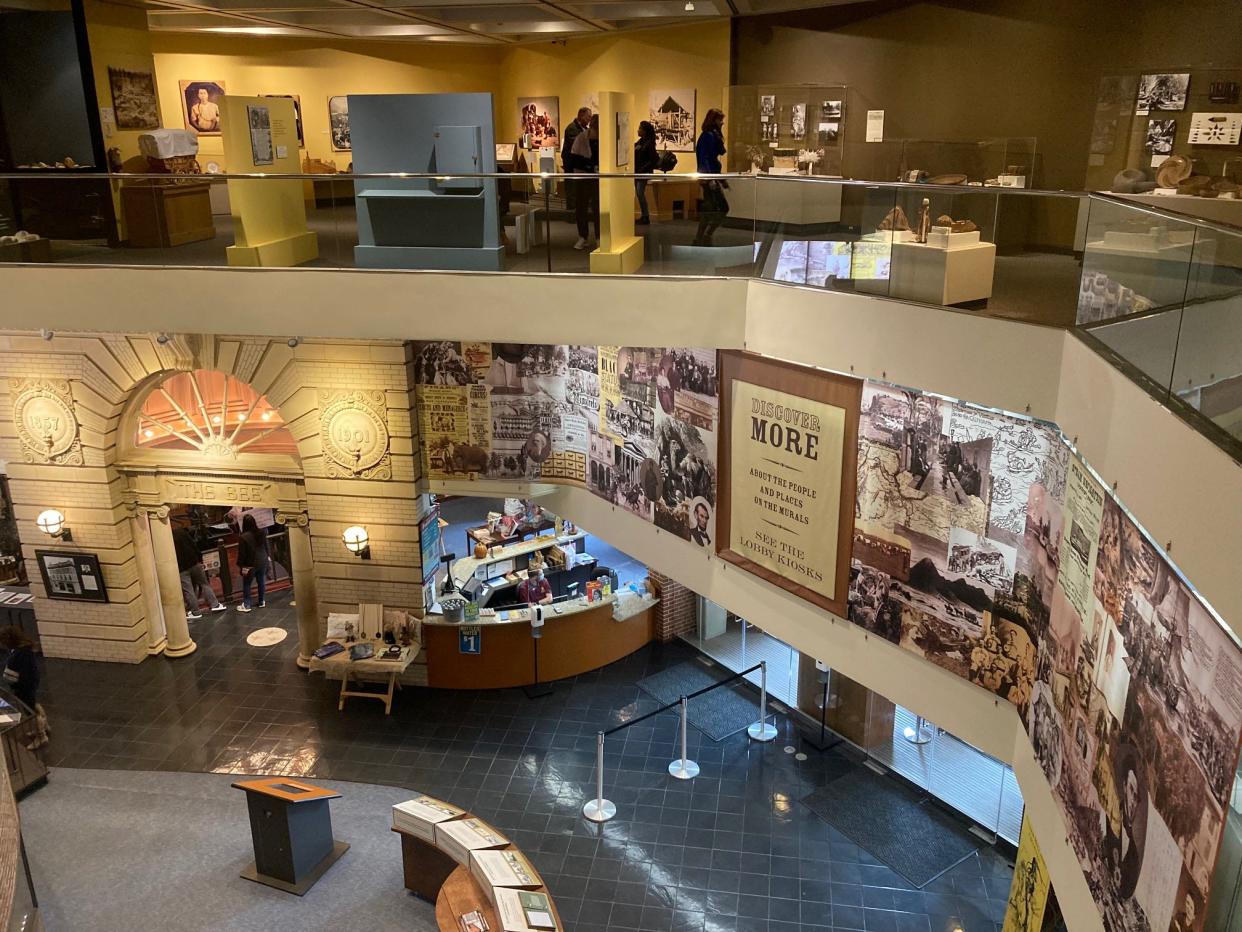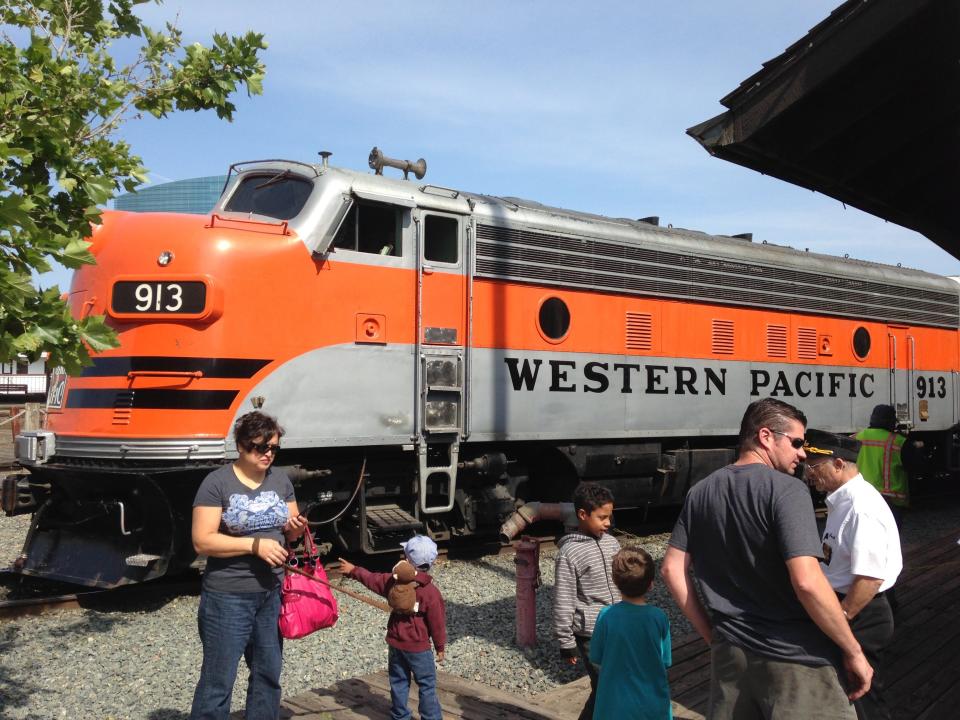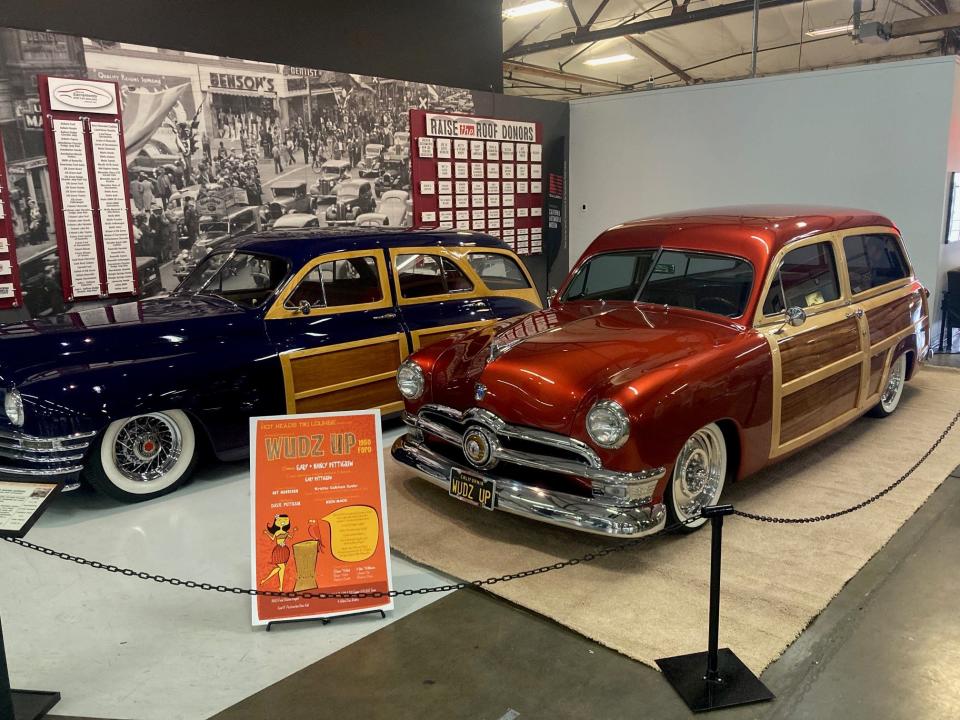Old Sacramento presents an historic, shopping and culinary masterpiece

Just 40 miles north of San Joaquin County lies perhaps the finest historic district in several states, interlaced with shopping, dining and noshing opportunities extraordinaire. Take a tour of Old Sacramento with us as we explore this compact 20+ block area, sandwiched between Interstate 5 and the majestic Sacramento River. Old Sac exudes California’s early history from the 1850s forward. The eminently walkable and bikeable historic district offers unique shops, restaurants and almost a dozen museums, just the place to stroll on its old boardwalks on sunny spring days. With plenty to see and do, and several resident lodging options, consider a several day tour and sleep on the river.
Old Sacramento profiles the area’s early history of indigenous peoples, to Mexican land grants, to gold’s discovery just up the American River, to the short-lived Pony Express, put out of business by the Transcontinental Telegraph and Transcontinental Railroad (which terminated in Old Sacramento), and weaves in the ingenuity and entrepreneurism of early Californians. Along with unique museums offering historic perspective, the area features unique learning opportunities for young and old and plenty of inviting places to take a break and recharge.
When gold was discovered on the American River in January, 1848 in Coloma (just 40 miles away), Sacramento was positioned to become a boom town, serving as one of two inland ports to the Sierra mines (Stockton being the other). As California’s population quadrupled in the 10 years after gold discovery, Sacramento would become the second largest town in the west, behind only San Francisco.
A natural place to start your tour is the Sacramento History Museum, 101 L St., which offers insights into the original Native American peoples who prospered in the area, eons before Spanish, European and American settlers arrived. A variety of galleries, with docents dressed in period-correct costumes, offer insight into what daily life was like, 170-some years ago. The museum profiles early residents, like Isaiah Dunlap (c. 1840-1911), an African-American settler, who established himself as a barber and shaving saloon proprietor, and worked to build a community with churches, social clubs and businesses, as well as lobbying for school integration and voting rights.
The museum also profiles early manufacturing, transportation and agricultural innovations that helped make Sacramento a leader in the state’s rapid growth; the original printing plant and technology of the Sacramento Bee appears in a special exhibit. The museum’s heralded Underground Sacramento tours now offer expanded options, taking guests below street level to view the original level of old buildings and streets before flooding forced Sacramento to raise streets almost 20 feet (transforming building’s second floors into main floors).

A half-block away is the California State Railroad Museum, 111 L St., one of North America’s finest rail museums and a Smithsonian associate museum. Admire the famed “golden spike” that connected the two segments of the transcontinental rail system, salivate in a beautiful dining car with elaborate China settings, delight in a swaying Pullman sleeping car and stand in awe of a 1,000,000 pound steam locomotive. A favorite, a huge cab-forward steam locomotive, seemingly a block long, was designed to haul long freight trains through the Sierra’s cavernous snow sheds, allowing the “cab-forward engineer” visibility that coal smoke would obliterate for traditional locomotives.
Within a few blocks are the Wells Fargo History Museum, 1000 2nd Street, re-creating a 19th-century Wells Fargo Express office and displaying gold rush artifacts and the Huntington and Hopkins Hardware Museum, featuring a replica of an 1860’s hardware store. The Old Sacramento Schoolhouse Museum, 1200 Front St., is a replica of a traditional one-room school-house featuring vintage student desks and other furnishings of the period.
On the waterfront is the Delta King Hotel and Restaurant, part of the historic Delta King river boat, built in Stockton in 1927 (along with its sister ship, the Delta Queen). Guests can spend nights aboard the ship in one of 44 luxury riverboat cabins and savor dining in the old Pilothouse Restaurant. In its heyday, the Delta King would depart San Francisco in the early evening, and deposit well-rested guests in Sacramento early the next morning.

Just south is my favorite (spoiler-alert, I serve as a museum docent), the California Automobile Museum, 2200 Front St., displaying over 130 vehicles ranging from the early 1900s, to the muscle cars of the 60s and 70s, to the high-tech wonders of modern autos. A current special exhibit is the finely tuned autos of Steve Saleen, who began to build enhanced Ford and other racing cars in the 1970s and beyond. Beginning March 18, the Saleen exhibit will be replaced by Wood is Good, a display of classic woodie autos by the National Woodie Club.
Just north is the recently opened SMUD Museum of Science and Curiosity; just southeast is the acclaimed Crocker Art Museum with the world’s foremost display of California art and its holdings of European master drawings and renowned ceramics.
Old Sacramento features well over 70 unique shops and a host of epicurean choices. Reliable eateries, from reasonable to expensive, include Fanny Ann’s Saloon, the Firehouse Restaurant (inside an historic firehouse), La Terraza Mexican Restaurant (with second floor veranda for fun people-watching down below), the Rio City Café, Joe’s Crab Shack and the Pilothouse Restaurant on board the Delta King. For mouth-watering baked goods and sandwiches, stop at Steamer’s Bakery and Café. Overnight lodging is available on the Delta King and the nearby Embassy Suites (beside the historic Tower Bridge) – make Old Sacramento an overnight tour.
For info: California Automobile Museum, calautomuseum.org; California State Railroad Museum, californiarailroad.museum; Old Sacramento, oldsacramento.com: Sacramento History Museum, sachistorymuseum.org.
What’s on your travel itinerary? Contact Tim, tviall@msn.com. Happy travels in the west!
This article originally appeared on The Record: Old Sacramento presents an historic, shopping and culinary masterpiece

